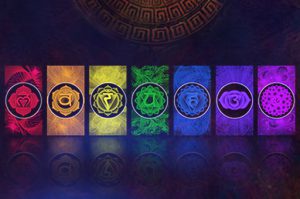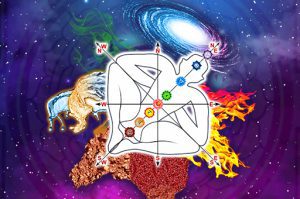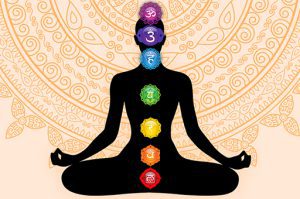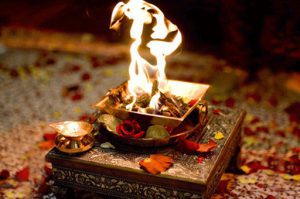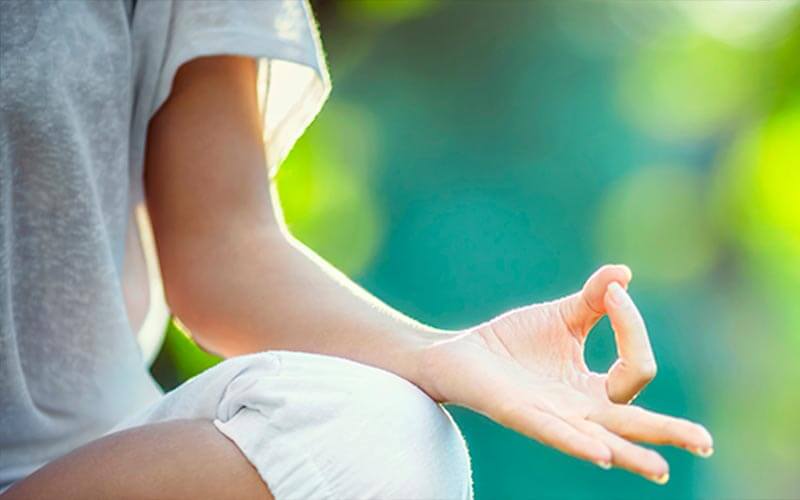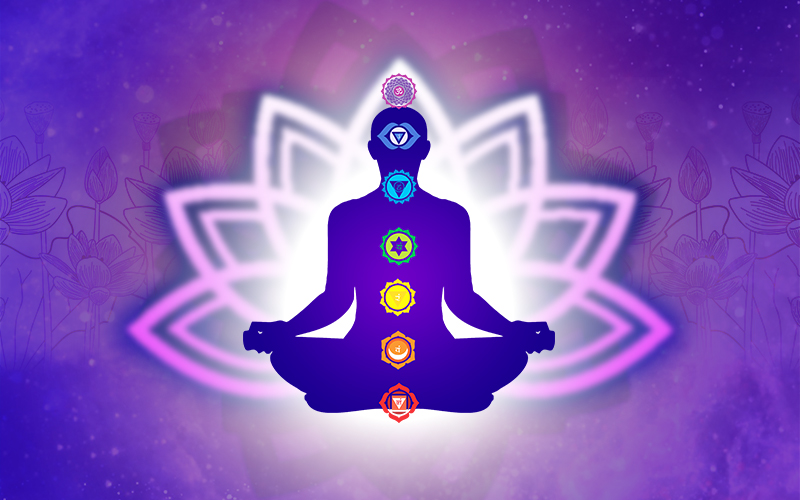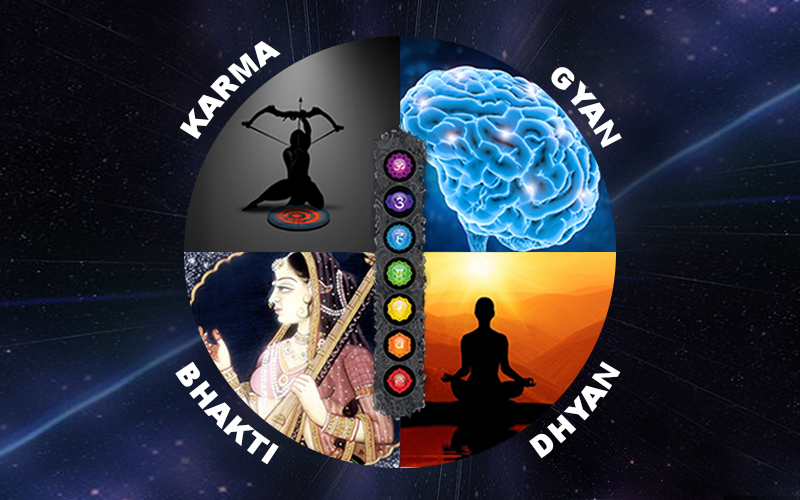
Yog is all about the path we choose to connect to our Higher Self. Sue Monk Kidd, a novelist and memoirist, quotes beautifully, “The true self is not our creation, but God’s. It is the self we are in our depths. It is our capacity for divinity and transcendence”.
Before we move further, let us explore the meaning of the greeting ‘Shivohum’. Have you noticed that we never associate the suffix ‘ohum’ with other deities? We never say Vishnuohum or Brahmaohum, but instead, we associate the word with Lord Shiva. The reason is that the word ‘Shivohum’ constitutes of two terms, namely Shiv and Aham, which translates to ‘I am Shiva’. And Shiva is higher consciousness. Our entire existence is based on Him. Allow me to explain.
If asked why we are given this life as a human, our answers may vary from having a human experience to previous karma. Others might not be self-aware and could be entangled in life’s problems and challenges. Many might even question the existence of God in the face of suffering and calamities. The truth is you are not here to experience life or fulfil previous karma, but you are here to realise that you are Shiva. You are here to have a union with your true nature.
What does ‘union with my nature’ mean?
Let’s simplify it with an example. Today, if good things happen in your life, maybe like a pay hike or promotion, you are happy. If you do not get the promotion, you are sad. If you think you are well dressed for an occasion, but no one compliments you, you are unhappy. But if someone does, you feel pretty. If situations are favourable, you are happy and excited, and if they are not conducive, you get upset. In short, you change as per the conditions outside of you. The moment you realise your true self, it is the day you will come into union with Shiva. Because that time you will realise that success, beauty and power are natural to you and not something you seek. And it is connection with that natural state o your being that is actually making you happy. Because Shiva, as mentioned before, is your higher self.
What are Yog Paths?
The path of Yog is a systematic method by which you can connect to your Higher- Self. Your consciousness has 4 parts namely
- The Consciousness of Body,
- The Consciousness of Mind,
- The Consciousness of Senses and
- The Consciousness of Soul or Identity
- Your body is given to you to discover yourself. It is a tool given to you to realise your higher self.
- You are given your mind to discriminate between what is right and wrong. But what are you using it for? By discriminating between Pleasure and pain, past and future, right and wrong, good, or bad, you are wrongfully using your mind for definitions.
- The senses are given to you to realise ‘Sachitanand’ and understand the nature of your true self. However, you associate with your experiences and develop sensory perceptions of fear, anxiety, nervousness, and lust. Ergo, your senses are not living their true state of truth, consciousness, bliss, and love.
- The different identities are like a costume given to play the story of your life and ultimately realise your higher self. So, you have to understand everything is provided to you in a pre-planned plot. Nothing is in your control, and the only thing to do is surrender to the story.
Why Yog?
An Aatma (Soul) lies within us, and it is the part of Parmatma (Supreme soul). The true nature of the Parmatma (Supreme soul) is Ananda (bliss), and the soul within us always strives for Ananda. This nature of soul tends you towards happiness in life. We are continuously running behind seeking happiness; for instance, we believe we will be happier with a promotion, a bigger house, or being rich. While running what we forget to notice is that we unknowingly associate happiness with materialistic and selfish needs and get trapped into this world. We often depend upon the outer world for pleasure instead of seeking it within. Alas, this materialistic world is nothing but just a delusion (Maya). You can indeed be happy when you dissolve all the definitions in the conscience. When you have no definitions, you are content. Thus, Ananda is truly acquired when the Soul experiences the Supreme soul. The 4 paths of Yog help achieve this. So, the only purpose of a spiritual realisation is happiness, and there are four paths which are like the tributaries of a river, ultimately joining the ocean of higher consciousness.
- What does Karma Yoga mean?
It is the path of selfless service where karma means action. The day your actions become selfless; you achieve realisation by Karma Yog.
- What does Bhakti Yoga mean?
It is the path of devotion, not necessarily towards God, but it can be devotion towards your work, taking care of your parents and likewise.
- What does Gyan Yoga mean?
It is the path of seeking of knowledge that makes you one with the truth.
- Raja Yoga-
It is the path of controlling the Mind through a course of disciplinary practices.
Do you think you can choose one path? No! One must use all the four ways to achieve Yog, but only one of the four directions would be more dominant.
Body
When you use your body to perform all the actions with no desire for any outcome that is Karma Yog. You use your body as a tool, and it surrenders to you and performs activities without desiring any result. So, in Karma Yog, you use your physical self.
Senses
When you use your senses to communicate love and compassion, that is Bhakti Yog or devotion. We tend to use our mind for pleasure or pain. Once you rise above the definitions of the mind and live your true nature of selflessness, your senses dance to tune of loving oneness with the divine.
Mind
Learning to use your intellect to differentiate between truth and illusion is Gyaan Yog. How do you use your mind today? Do you ponder between what works for you and what doesn’t? Are you torn between success and failure? Are you judging people and situations? Realising the difference between truth and reality is Gyaan Yog.
Identity
Ultimately, the day you start using your identity to train yourself through different paths, it becomes Raj Yog. Thus, the body gives rise to Karma yog, the mind provides fodder for Gyaan yog, senses give rise to Bhakti Yog, and ultimately, your identity gives rise to Raj Yog.
No matter the starting point, the end destination of these four paths is always the same.
What is the root cause of suffering?
Every single human being who is not enlightened is suffering. It is because he has forgotten and has disconnected from his true loving and joyful self. According to Vedanta, the ancient Scriptures, there are 3 reasons why you are disconnected.
- Mal– In Sanskrit, you say ‘Mal’, which means dirt, the egoistic self. Today you are thinking of personal benefits like what will be good for me, my family, my close ones, and my life? Because of this illusionary separation from the rest, you have a concept of pleasure and pain. So, the first reason why you are disconnected is that you have developed an ego.
- Vikshepa – Your mind is like a monkey because you are jumping and searching for your true nature, which is Ananda, happiness. Because of this tendency of being focused outwards, you are confused, and that’s the monkey mind at work.
- Avarna – It is like a curtain of falsity is upon you. The Supreme has scripted a multi-layered story, and you got trapped into it. So, the forgetfulness of not knowing your true self is hidden in layers. Since life is about self-realisation, it will unveil when the time is right.
Four types of Yog
- What is Karma Yoga according to Bhagavad Gita?
Hindu religion has simplified spirituality as easy to remember, interesting stories. Mahabharata speaks about the episode between Lord Krishna and Arjun who feared lifting weapons lest he killed his loved ones. It was a battle between two warring brothers over what is right and what is the truth. Krishna told Arjun that you have to fight for the truth; it does not matter whom you are killing as far as it is a fight for the truth. Here, Arjun had succumbed to emotions, but Lord Krishna said you must use your physical self for the truth and be selfless without expecting the result. Lord Krishna further quoted beautiful lines in the Gita which means that ‘You’ have a right to perform your duty, but you are not entitled to the fruits of the action. Never consider that you are the cause of the results of your activities and never be attached to not doing your duty. Whatever is expected of you, you must always do. You must realise you are neither the doer nor the non-doer. Never be attached to the result, that is Karma yog, the yog of action and selfless service. You will face many hindrances, challenges, delays, obstacles, and difficulties while doing your duty. Keep doing your karma in dedication, and the almighty will bless you. Karma yog is having a union with whatever you do as worship and not as an action.
- What is Bhakti Yog- Yog of devotion according to the Bhagavad Gita?
Love is the most fundamental drive of any living entity. Lord Krishna has said in Gita that whoever offers me with devotion a leaf, a flower, some fruit, or little water – that so offered devotedly by the pure-minded, I accept. What does He mean by this? Krishna personifies Ananda, so anything you do with pure devotion will give you happiness. Bhakti is developing the emotion of devotion, love, compassion, and sacrifice for every being in this world. It is not just towards the deity but can be towards anything. Meera was a devotee who loved Krishna. She was married in a princely family, and they were against her devotion, so they tried to destroy her faith, but she continued loving Krishna. Then she was given poison to drink on which she laughed and consumed it, and after that, she merged with Krishna. When you love something with total surrender with an absence of ego, it becomes Bhakti. It is one of the ways to approach God, and every person must have bhakti in at least one thing, and slowly it should expand to everything.
- What is Raja Yog according to Bhagavad Gita?
Raj Yog is the path of discipline in which Lord Krishna says “For him who has conquered the mind, the mind is the best of friends, but for one who has failed to do so, his mind will remain the greatest enemy”. The word Raj means king and he controls the entire kingdom independently and confidently. So, in Raj Yog, we must have control over all our faculties. Every other method or Kriya comes under Raj Yog. Patanjali’s Yoga Sutra mentions the following eight steps to achieve the Yog.
- Yama
- Niyama
- Asana
- Pranayama
- Pratyahara
- Dharana
- Dhyana
- Samadhi
- What is Gyan Yog according to Bhagavad Gita?
Gyan Yog is the Yog of intellect and will. In this yog, we understand what gives us stability and peace. The truth gives us peace, and it liberates us. In the Bhagavad Gita, Lord Krishna says, “When a man puts away all the desires of his mind, O Partha (Arjuna), and when his spirit is content in itself, then is he called stable in intelligence”. In Gyan Yog, we question till we find the answers as it is the path of knowledge, wisdom, introspection, and contemplation. It involves an in-depth exploration of our being by systematically exploring and setting aside false identities. We often ask questions like ‘why’ and who am I’. Self-observance is the crucial quality of a Gyan yogi seeker. When you start following the path of Gyan Yog, you become more aware of your true self.
Thus, we must work on all the four paths of Yog to come in union with the ‘Higher-self’.



